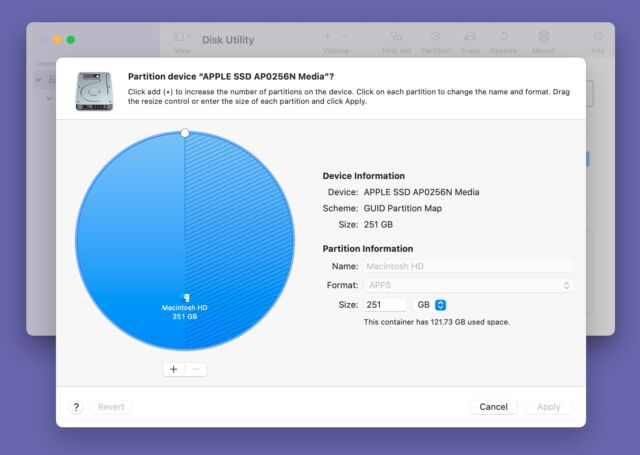Two In A Bush Mac OS
Mac OS X is evolved enough so that its features and what you canaccomplish is far above better and beyond NEXTSTEP / OPENSTEP. Someregard that it might be an understatement to say that OS X is derivedfrom NEXTSTEP / OPENSTEP. In many respects it's functionalityresembles the same and one might think of it as OpenStep 5 or6. However, the similarities should not mislead you. Mac OS X nowadaysis based on Darwin and chunks of existing open source software from alarge number of sources like BSD, GNU, Mach, ... and even Linux.

Although Darwin is an operating system in itself, it can be bestunderstood as a collection of technologies that have been integratedby Apple to form a major, central part of Mac OS X. Criticalapplication environments of Mac OS X, such as Cocoa and Carbon, arenot part of Darwin. Furthermore Aqua which is the standard graphicalinterface of Mac OS X including the Windowing System, and severalother components are neither part of Darwin.
The OS-X Linux connection exists for several reasons:
- You only have or like Apple hardware.
- Interaction with commercial software.
- Input / Output devices only compatible with Apple hardware.
- Audio or Video interfaces that don't have Linux drivers.
- Customized software that only works in one platform.
- Perhaps you are not used to compile Linux kernels.
- File transfer and exchanging.
The first method is actually a pretty nifty technical trick that lets you share your Mac’s audio output to two pairs of Bluetooth headphones at the same time. This method also works with a combination of wired headphones plugged into the headphone jack on your Mac and a Bluetooth headset. It only works in Mac OS X. Since that iMac only has USB 1.1, a USB stick will be slow as molasses. If they put the OS 9 drivers in a dmg file, that's the dumbest move. A stuffit or zip archive has more 9 compatibility. If what he says is accurate, extract all the files and drag to a folder in Mac OS X. Drag that folder onto a Mac OS 9 formatted. OS X, however, understands both the original Mac line break and Unix line breaks. This can cause confusion very easily, especially considering that most Mac applications (i.e., most anything that runs through the GUI of OS X) read and save using Mac-style line breaks, while anything used through the Terminal (like the common text editors Hack.
The missing link between OS X and Linux in many respects is X11 or theX window system referenced above in its own section. Many of thecommands only available in Unix systems before are becoming more andmore available in OS X in particular because of theFink project which is also an Open Sourceinitiative. Therefore it should not be hard to have that same Linuxfunctionality with Apple hardware.
If you want to have that Apple's geek machine youneed to get some packages that Apple offers for free download untilnow in addition to Fink. The Apple OS X developer tools, X11 for MacOS X and of course Xemacs for Apple's X11. You get Xemacs after youhave installed Fink.
A fair price for a stellar piece of software. If you own an older Mac, OS 9.2.x is the best way to go; it's faster than 9.1 and supports the most amount of software prior to OS X. This particular product is a full release which is what you want instead of an iffy upgrade version, because you can install the entire OS from scratch if you need to. If you’ve been wondering how to open two Finder windows on Mac, wonder no more! Here we’ll show you a few ways to open more than one Finder window. You can increase productivtiy by utilizing two windows side-by-side on your Mac. Just use these steps.
As suggested by Rick Taube, following are the steps for having a“ready made” OS-X Linux like Apple hardware machine.
- If you don't have Fink installed already, you need to do that first. You can download Fink from:
- Download and install Apple's X11 server from:
www.apple.com/macosx/x11/download/
Note:If you are using Panther (OSX-10.3x) or above X11 comes as part of itsdistribution CDs which you can install at your own discretion. - Next you might want to intall Apple's Developer Tools as well:
Note:Apple's new Xcode (developer) tools are also included in everycopy of Mac OS X v10.3 or above and should be installed from its CD (2).
If still you need to download Apple's developer tools, they might befound at:
Developer Tools
- Now, to get the CCRMA Lisp world running on OS X you should download OpenMCL from:
openmcl.clozure.com
- SBCL now seems to be a good option for OS-X and can be found at:
www.sbcl.org
Instructions for compiling the CCRMA Lisp world on OpenMCL or otherOS-X Lisps like SBCL can be found in the documentation of each package(CM, CLM, CMN).
Two In A Bush Mac Os X
SubsectionsTwo In A Bush Mac Os Catalina
© Copyright 2001-2021 CCRMA, Stanford University. All rights reserved.
Created and Mantained by Juan Reyes